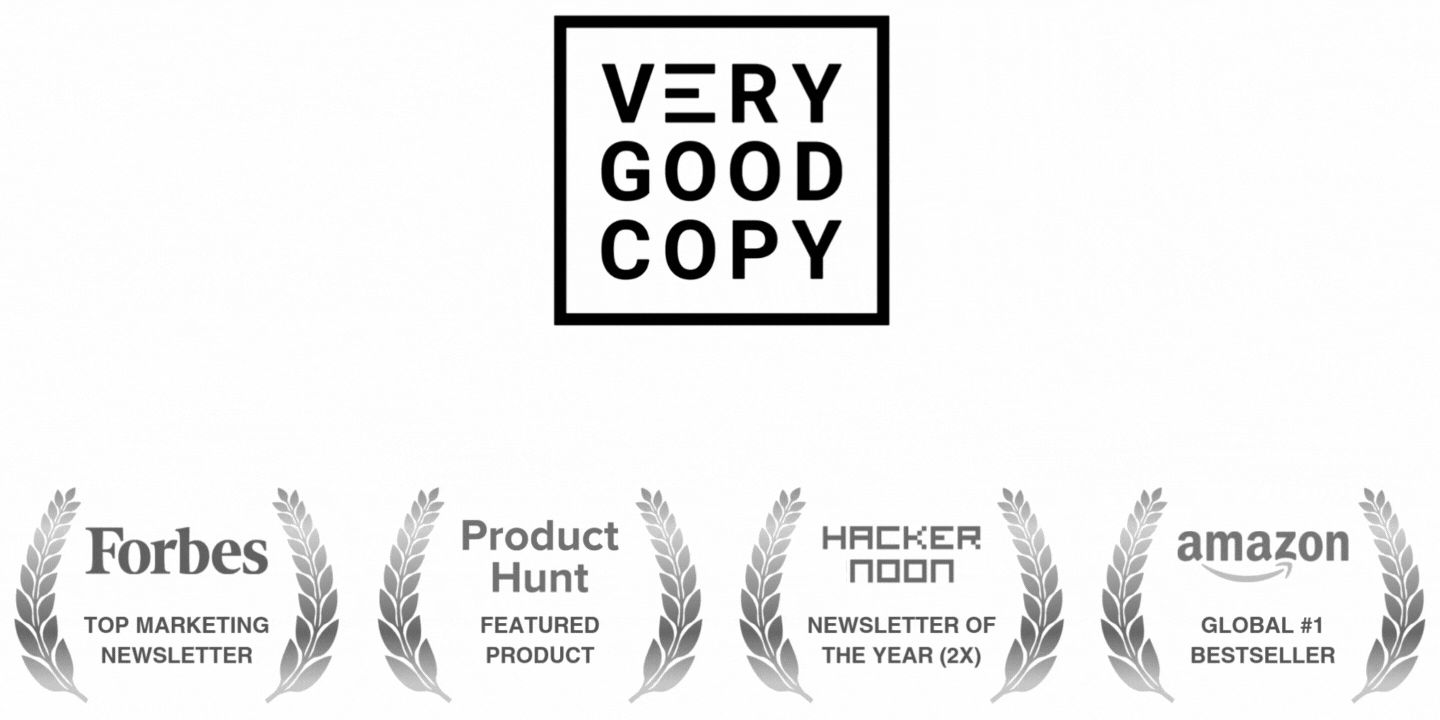EDITOR’S NOTE:
André Spiteri is a copywriter based in Scotland.
I asked him about his work routine:
“I work best in short bursts,” he told me. “I think hard, write non-stop for an hour or so, go off and do something mundane like put the wash in the tumble-dryer to gain some perspective, and repeat.”
Reminds me of that saying: The moment you start to slide, you’re shoveling against the tide.
Meaning, if you can’t focus, don’t force it. Don’t shovel against the tide, especially when you’re writing. Things will usually get worse if you do.
Better to walk away, do something else. Like André said, a break — even 5 minutes — will give you invaluable perspective.
André shares other great advice in his 434-word Micro-Interview, including:
How to attract your ideal clients…
How to get prospects in the MOOD to read your copy…
A nearly-100-year-old marketing book that’s still relevant and vital today…
And more…
Enjoy!
Instantly get 6 “micro” courses and series about copywriting when you subscribe to the VeryGoodCopy newsletter for free. Plus...enjoy new content every week. Learn more →
Thank you, André.
Let’s get started:
1) “What’s your work routine?”
It's more a pattern than a hard and fast routine. I'm useless in the mornings, so my workday tends to start late. I start my day with some reading, do household chores, spend time with my daughter, perhaps go for a run, and typically waltz into my home office at around 11 or 11:30 am.
Most days, I'll have a big piece of creative work to sink my teeth into, plus two or three smaller tasks like admin or editing.
I work best in short bursts. I think hard, write non-stop for an hour or so, go off and do something mundane like put the wash in the tumble-dryer to gain some perspective, and repeat. I knock off sometime between 5pm and 7pm depending on how well the writing's going.
If it's a tight deadline, I'll sometimes get back at it at 11pm, after everyone's gone to bed, work until I'm done or almost done, and give things a final read-through and polish the next morning. I find I can work in longer bursts at night.
If there's time, I like to let things stew, but only for a few days because otherwise I'd overthink it to death.
2) “What do you know about your work now that you wish you’d known when you first started?”
That the way a piece of copy looks is just as impactful as what the copy says.
Humans are visual creatures. Whatever we consume, we consume with our eyes first. In the case of copy, this means you can set a mood or make readers feel a certain way before they've read a single word.
I've started spending more time making sure what I write doesn't just read well, but looks right too. And I think my work has improved as a result.
3) “What did your biggest professional failure teach you?”
To trust my instincts.
4) “What’s the #1 thing that has helped you shorten your craft’s learning curve?”
I don't think you can shorten the learning curve. There's always something new to learn. It's part of the fun!
5) “What book has helped you the most over your career?”
There are loads, but I'll go with Tested Advertising Methods by John Caples.
It was published in 1932, but it still feels relevant and vital today. Every aspiring copywriter should read it.
6) “And your parting piece of advice?”
You can't be everything to everyone, so stop trying.
Embrace who you are and you'll attract more of the kinds of clients you want to work with... and less of the ones who aren't a good fit.





